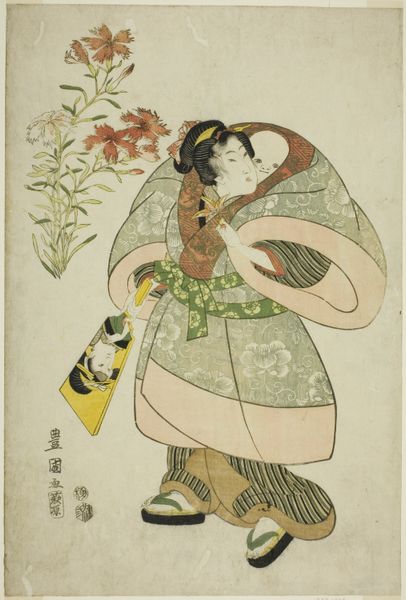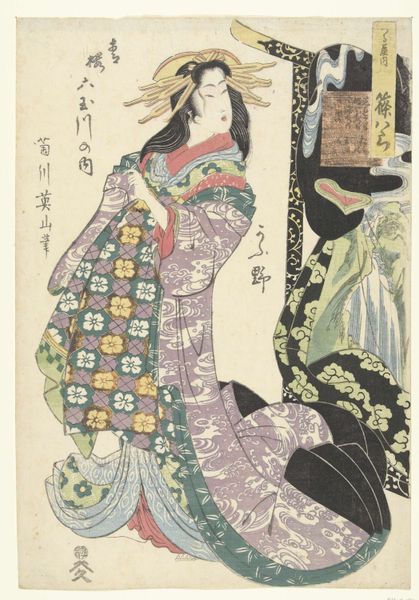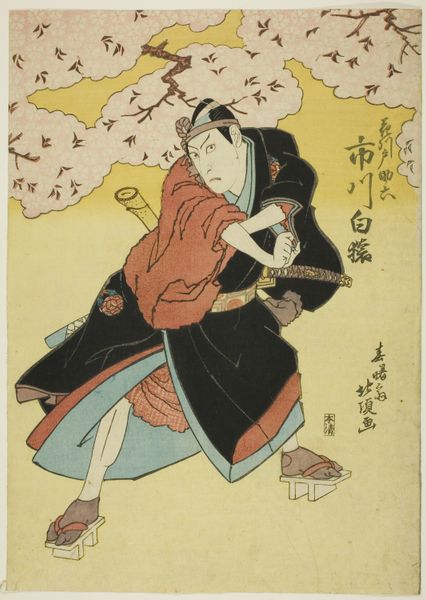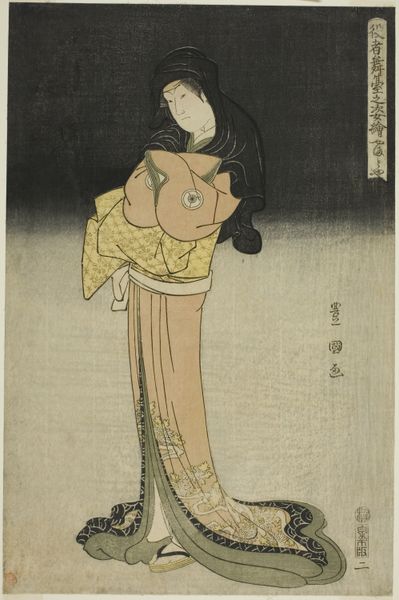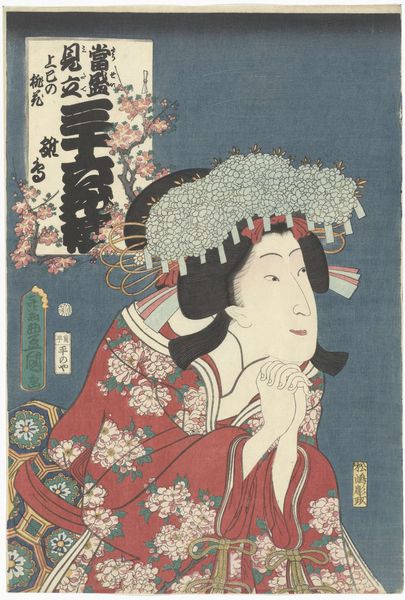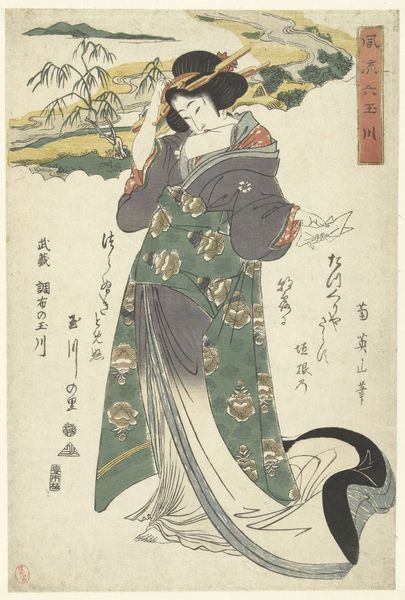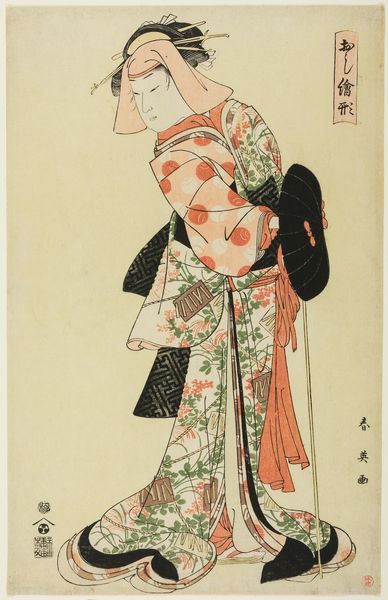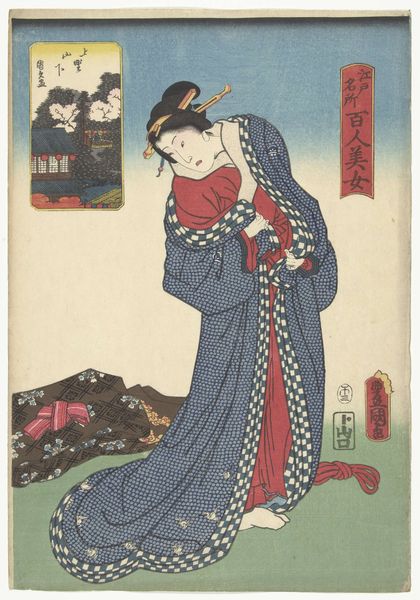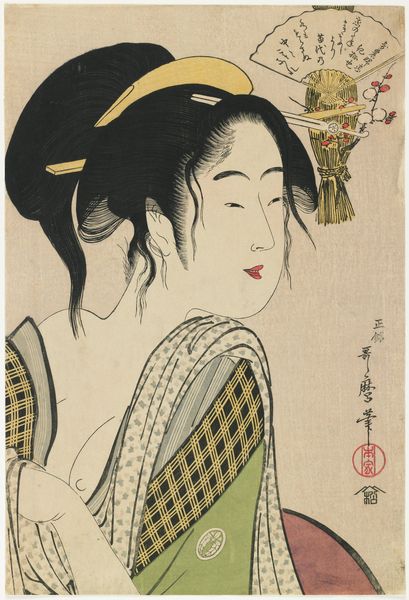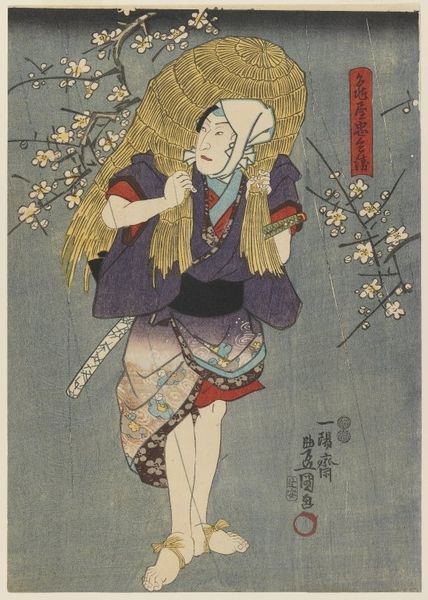
print, woodblock-print
#
portrait
# print
#
asian-art
#
ukiyo-e
#
figuration
#
woodblock-print
Dimensions: height 374 mm, width 254 mm
Copyright: Rijks Museum: Open Domain
Curator: Looking at "Shirai Gonpachi met rieten mand," a woodblock print crafted between 1828 and 1829 by the artist Gigadō Ashiyuki, we find a compelling example of ukiyo-e portraiture from the collection of the Rijksmuseum. What strikes you first about it? Editor: Honestly? The way he’s staring off into the middle distance, lugging that slightly pathetic woven basket. He looks deeply inconvenienced, like he drew the short straw at chore time. Is it just me, or does he radiate a very specific kind of reluctant energy? Curator: It’s interesting you pick up on that. Gonpachi was a well-known, almost mythic figure. His story, filled with both romance and tragedy, became a popular subject in Japanese art and theatre. Editor: Tragedy and woven baskets? Seems like an odd pairing. Tell me more. Curator: The basket might be symbolic of his itinerant life, his wanderings as he tries to evade the consequences of certain events, which vary depending on which telling you follow. More generally, this kind of theatrical portrait, called a yakusha-e, served as promotional material. Playgoers identified and empathized with their favorite actors, as much as the character they portrayed. In Japanese Kabuki theatre, it became traditional for actors to display highly charged emotions, known as *Mie*, during critical scenes. Editor: *Mie*, the performative emotion you talk about makes total sense in contrast with that basket. This everyday object and that heightened, slightly melodramatic gaze—there's something deeply appealing in their contrast. Do you think the red knot details function in a protective, talismanic kind of way for him as a dramatic figure? Curator: It’s entirely plausible! Those knots could very well represent not just aesthetic ornamentation, but act as binding agents—literal ties to ward off negativity or misfortune, given Gonpachi's rather turbulent life arc. What else stands out? Editor: I think he’s an unexpectedly powerful portrayal. Even through this relatively static medium, there is so much being conveyed about Japanese cultural heritage and how theater plays an outsize part in it. Curator: Indeed, it offers a unique lens to reflect upon ourselves and explore archetypal dramas of humanity through accessible images.
Comments
No comments
Be the first to comment and join the conversation on the ultimate creative platform.

